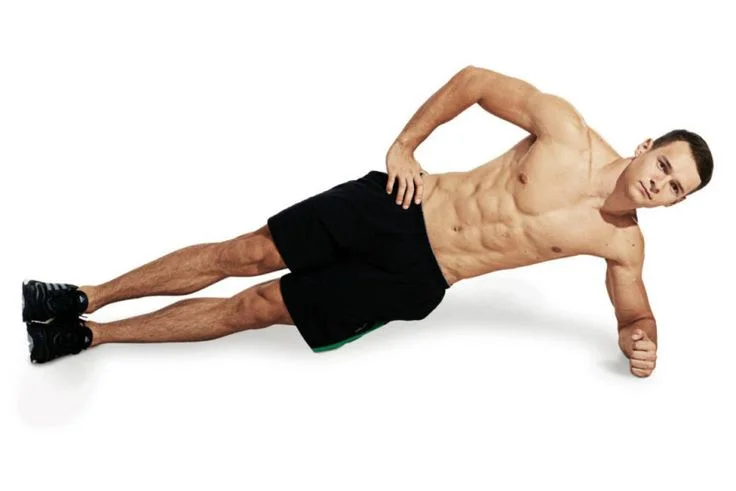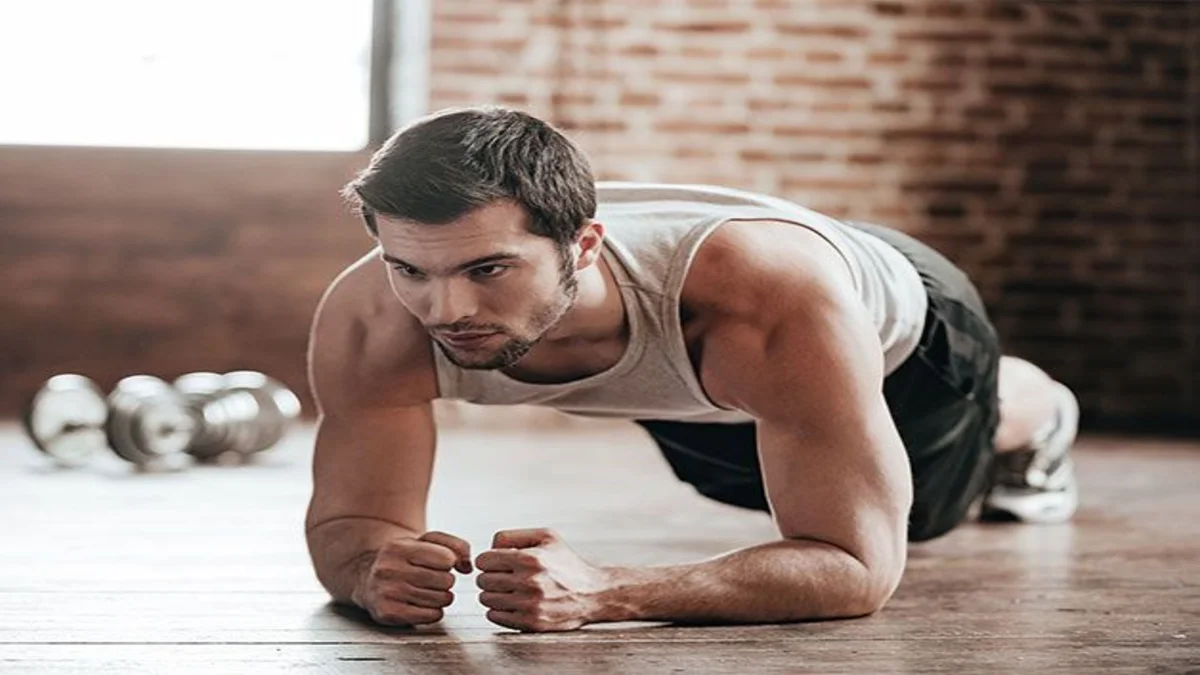These 10 ABS exercises for beginners will help you build a strong core and toned abs. These workouts may be performed at home with no equipment and are simple to learn and adjust.
Whether you’re just getting started on your fitness journey or if you’re looking to get back to basics, it’s important to incorporate some beginner ab exercises into your regime. (Remember, just because they’re beginner moves doesn’t mean they’re easy or less effective.) Beginner ab exercises allow you to perfect your form and focus on making all the core muscles work.
Working out those core muscles is essential for leveling up your fitness and well-being in general. Not only is your core the center point for all movement, but these muscles also support your spine and protect all of your organs. And, rocking a toned tummy is a bonus perk.
Major Muscle Groups Of The Core
- rectus abdominis (your six-pack muscles)
- transversus abdominis (the muscles beneath your rectus abdominis)
- internal and external obliques (side abs)
- multifidi (muscles in the back of your core, along your spine)
- erector spinae (muscles along the sides of your spine)
Other muscles (such as your pelvic floor and diaphragm) also help, so it truly is a team effort. Maintaining these muscles in peak condition is essential if you want to run, lift, jump, and destroy whatever flavor of exercise you enjoy in the long run.
ABS exercises for beginners
1. Deadbug (ABS Exercises for Beginners)

Why it rocks: This lying-down activity supports your lower back while developing core strength and swiftly fatigues your lower abs as you stretch your opposing arm and leg.
How to:
- Begin by lying back with your arms extended across your chest and your legs elevated and bent at 90 degrees (knees above hips and shins parallel to the floor).
- Maintain a firm grip on the floor with your lower back, brace your core, and gently and simultaneously extend and lower your right leg, hovering just over the mat.
- Return to the beginning after a brief pause.
- Repeat on the other side.
Modify it: Try holding this stance with your knees on the tabletop and your arms perpendicular to your body when you first start off. That alone can help you tune into and engage your core.
2. Seated Straight-Leg Lift (ABS Exercises for Beginners)
Why it rocks: If you’re still working on your core strength, lying leg lifts might be taxing on your lower back, but this seated variation ensures you’ll be uncomfortable in all the right places (read: six-pack muscles).
How to:
- Begin by sitting with your legs out in front of you.
- Hinge forward gently while sitting erect and activating your core.
- Maintain a flexed foot while elevating the right heel 3 to 5 inches off the ground.
- Lower and pause.
- Rep with the left leg.
Modify it: When you’re just starting out, moving your hands next to or behind your hips makes this action more comfortable and helps improve posture. Jones suggests tenting your fingertips to avoid detracting from the abdominal work.
3. Side Plank (ABS Exercises for Beginners)

Why it rocks: With this exercise, say hello to your side abs. Side planks work your obliques hard while also using your entire core.
How to:
- Lay on your side with your right forearm flat on the floor, elbow under your shoulder, and both legs extended in a straight line from head to feet. Feet can be staggered for added stability or stacked for a greater challenge.
- Engage your core and lift your hips off the floor.
- Hold for 15, 30, or 45 seconds, then relax.
- Repeat on the other side.
Modify it: Jones recommends bringing your bottom leg down to your knee while keeping your upper leg straight.
4. Toe Touch (ABS Exercises for Beginners)
Why it rocks: Jones recommends bringing your bottom leg down to your knee while keeping your upper leg straight.
How to:
- Begin by lying on your back with your arms extended straight up over your chest (optional dumbbell in hand) and your legs arched straight up towards the ceiling with your toes pointed.
- While keeping the lower body steady, engage the core and lift the upper body off the mat to tap the ankles or feet with your fingertips.
- Return to the beginning. That is one rep.
Modify it: To make toe touches easier, Jones suggests bringing your legs into a tabletop posture but continuing to reach up as if they were fully extended.
5. Table Top with Knee Tap (ABS Exercises for Beginners)
Why it rocks: With this steady and controlled movement, work your way up to the bear plank. As you get better, you can extend your hover.
How to:
- Begin on all fours, palms flat on the floor (fingers forward), wrists and elbows just beneath shoulders. Knees should be squarely beneath the hips, and toes should be tucked and pressed into the mat. Maintain a long, neutral neck.
- Lift your legs off the mat, keeping your core firm, until your hips are in line with your shoulders.
- For one to two seconds, hover your knees.
- Controlfully lower the knees to the ground. That is one rep.
Pro tip: To experience a lift, engage your core rather than pushing via your toes and palms.
6. Bird Dog (ABS Exercises for Beginners)

Why it rocks: This technique strengthens your core by keeping your shoulders and hips square to the floor as you stretch your arm and leg..
How to:
- Begin on all fours, with wrists immediately beneath shoulders and knees beneath hips. Maintain a flat back, engaged abs, and a small bend in the elbows.
- Extend your right arm in front of you at shoulder height, and your left leg straight behind you at hip height.
- Bring the right elbow and left knee together under the belly.
- Straighten your right and left arms. That is one rep. Complete all reps before switching sides and repeating.
Modify it: To make this motion easier, extend one leg at a time with both hands planted, followed by one arm at a time with both knees planted. Jones suggests gradually progressing to simultaneously extending the opposite leg and arm.
7. Single-Leg Stretch (ABS Exercises for Beginners)
Why it rocks: If bicycle crunches aren’t quite right for you, this tweak is a wonderful place to start.
How to:
- Lie on your back with your left leg straight in the air, just above the mat, and your head and shoulders curled up off the floor to hug your right knee to your chest with your arms.
- Keep your left leg straight and your left foot a few inches off the ground.
- Release, straighten, and hover right leg slowly and with control, while bending left leg, pulling knee in towards the chest, and wrapping hands around left shin. That is one rep.
8. Plank with Knee Tap (ABS Exercises for Beginners)
Why it rocks: Those knee taps may appear to be simple, but they increase the difficulty for your entire core as they work to keep your hips stable.
How to:
- Begin in a forearm plank, elbows stacked under shoulders, palms flat, core engaged, and legs straight.
- Lower both knees slowly and with control until they kiss the ground.
- Return to a plank position by extending your legs.
Pro tip: Consider each tap to be one repeat, and then return to your forearm plank, focusing on good technique rather than momentum.
9. Plank Knee-To-Elbow (ABS Exercises for Beginners)
Why it rocks: As you pull your knee to your elbow in this pose, which is a mainstay in many a yoga flow, your obliques work particularly hard.
How to:
- Begin in a high plank stance.
- Lift your left foot off the floor and drive toward your left elbow while keeping your hips level and your back flat.
- Reverse movement with control to return to the beginning.
- Rep on the opposite side. That is one rep.
Modify it: Jones recommends starting in a tabletop position and completing the movement by pulling one leg to the corresponding elbow.
10. Plank (ABS Exercises for Beginners)
How to do it:
- Get on all fours on the floor. Place your hands directly under your shoulders,
- elbows aligned with your wrists, and palms pressed firmly to the floor.
- Squeeze your abs, quads, and glutes, then hold. Think about digging through your heels, squeezing your quads.
- Hold for 30 to 60 seconds. Get some rest.
Why it’s cool: Besides being a classic core burner, high planks are a great base for kettlebell changes (the next exercise in this circuit). “The high board is at the top of the kettlebell swing,” Kanski says. “We are working the hips in extension and lighting up the shoulders and core.”
Note: You can skip this exercise if you are short on time.
Summary
These 10 ab exercises are a great way for beginners to start strengthening their core and building defined abs. They’re easy to learn and modify, and you can do them at home with no equipment.
To get the most out of your ab workouts, be sure to focus on proper form and technique. And don’t forget to warm up before you start and cool down afterwards.
Aim to do 2-3 sets of 10-15 repetitions of each exercise, 2-3 times per week. As you get stronger, you can increase the number of sets and repetitions, or add more challenging variations of the exercises.
Remember, consistency is key when it comes to getting results. So stick with your ab workouts, and you’ll be on your way to a stronger core and more defined abs in no time!
FAQs
Can a beginner do abs workout?
what is the easiest exercise for abs?
Lie down on the floor on your back. Place your hands alongside you on the floor. With your feet together, bring your knees toward your chest. Slowly curl your hips off the floor and towards your chest, then slowly lower them back to the beginning position using your abs.





